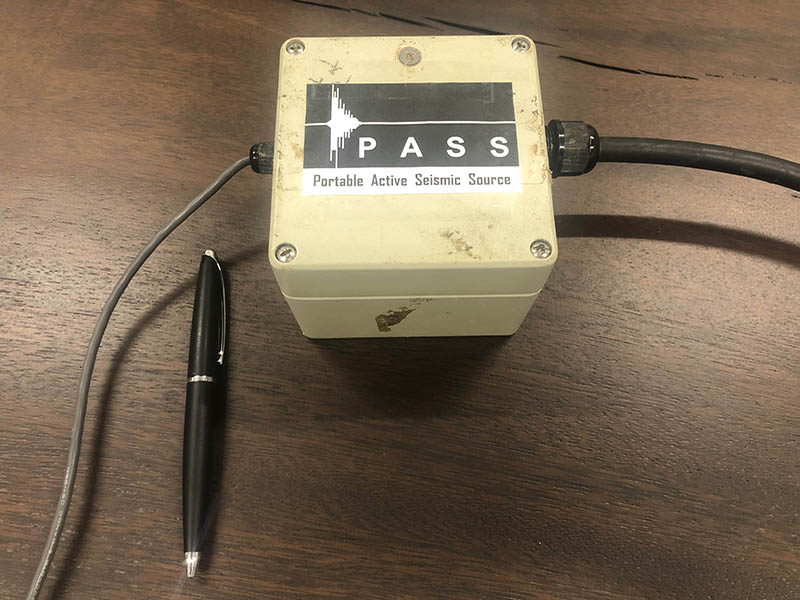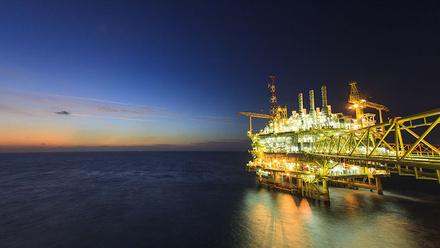Seismic device to advance carbon sequestration
Scientists in Japan claim to have engineered an improved, low-cost method for continuously monitoring underground CO2 storage sites.

This could enhance the detection of sudden gas movements that could result in carbon leaks, say the researchers at University of Tokyo and Kyushu University.
They explain that underground features like carbon reservoirs can be monitored using seismic waves, either generated by earthquakes or by man-made sources. But seismic monitoring typically requires large, expensive machinery, making continuous monitoring at the scale needed for carbon reservoirs cost prohibitive and practically challenging.
Initially developed for geophysical exploration on the Moon and Mars, the centimetre-scale, ultra-compact, Portable Active Seismic Source (PASS) device can be positioned either above ground or buried in the subsurface. Once set up, PASS is reported to transmit signals without interruption, even when the vibration energy is weak.
This is because when the PASS device repeatedly generates a large number of signals (or shots), their total sum enhances the signal-to-noise ratio making it possible to detect CO2 leaks from geological strata.
According to the paper on 4cm Portable Active Seismic Source (PASS) for Meter- to Kilometer-Scale Imaging and Monitoring of Subsurface Structures, published in Seismological Research Letters, the PASS device rotates an eccentric weight of about 10g with a 4cm diameter motor.
When the PASS device’s waveforms are recorded using a conventional seismometer or a fibre-optic type seismometer, such as distributed acoustic sensing, project lead Professor Takeshi Tsuji from the University of Tokyo says the findings show the signal from the device travels a distance of about 1km.
The team, he adds, can monitor changes in the ground over time after three months of continuous operation. As the device is also small enough to be buried in the ground, he explains that it is possible to improve the accuracy of the monitoring results by removing the noise of wind and rain on the surface. The motor’s size and the eccentric weight can both be increased to strengthen the device’s energy levels, the researchers note.
They believe the technological development has the potential to support the International Energy Agency’s (IEA) efforts to increase the capture and storage of CO₂ underground by 15%.
The researchers argue that to realise this scenario, large-scale CO2 storage sites would be needed at 6,000 global locations, which involves drilling wells into geological formations to inject the carbon. With such a high proliferation of storage sites, governments would need to monitor each one to identify potential CO2 leaks and earthquake activity as a safety precaution.
Tsuji says that compared to a conventional, large-scale, seismic source device, which undertakes an expensive single monitoring survey, at least 50 PASS devices could be permanently deployed at one CO2 storage site, covering a wide geographical area and thereby improving the spatiotemporal resolution of the monitoring results.
An additional benefit is that the PASS device can also be powered with a 12V battery so that it can be installed in hard-to-reach locations, the researchers explain.
The team has developed several types of seismic source devices, including a 1m-size PASS that can send signals over an 80km horizontal distance.
They are currently conducting research with a number of Japanese firms to explore using PASS for CO2 underground storage, as part of Japan’s ongoing and scheduled CO2 capture and storage projects. According to the team, the Japanese government is looking to reduce 120-240Mt of CO2 by 2050 through underground storage.
In addition to monitoring CO2 storage sites, the device can also be used for geothermal development, the monitoring of energy resources such as oil and natural gas, and to monitor civil engineering structures such as embankments and tunnels – for instance, the risk of a tunnel collapse during construction projects. Thanks to its miniature size, the device also lends itself to use on drones to carry out survey work.
Tsuji adds that, in addition to the device’s original intended purpose of exploring the Moon and Mars, the team plans to use it to monitor landslides, volcanos and earthquake faults.








